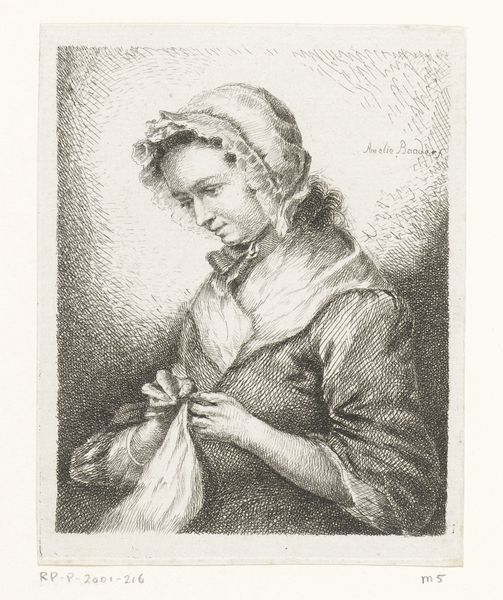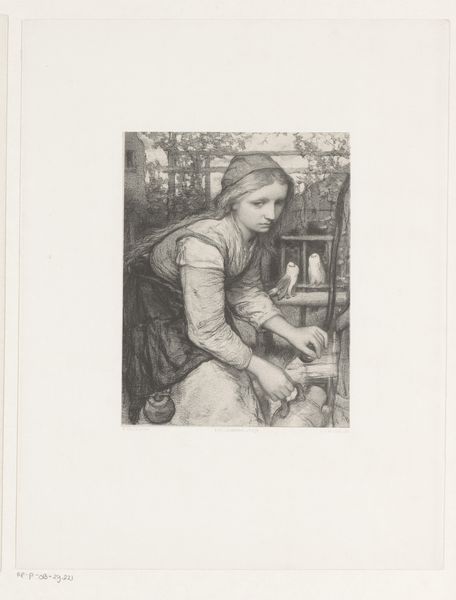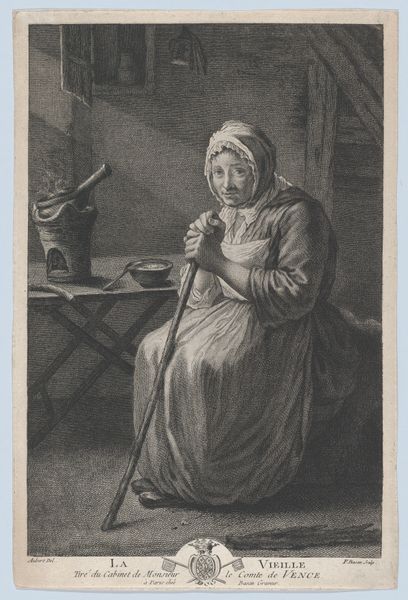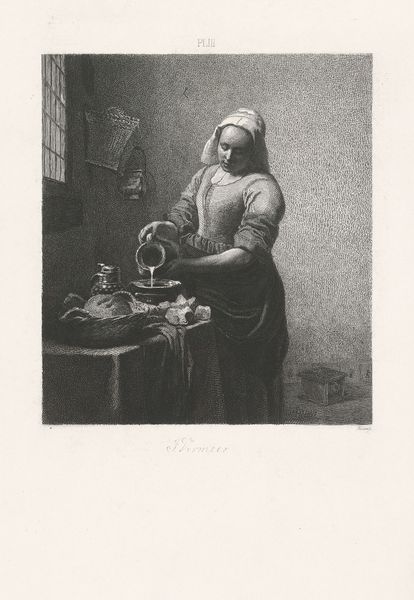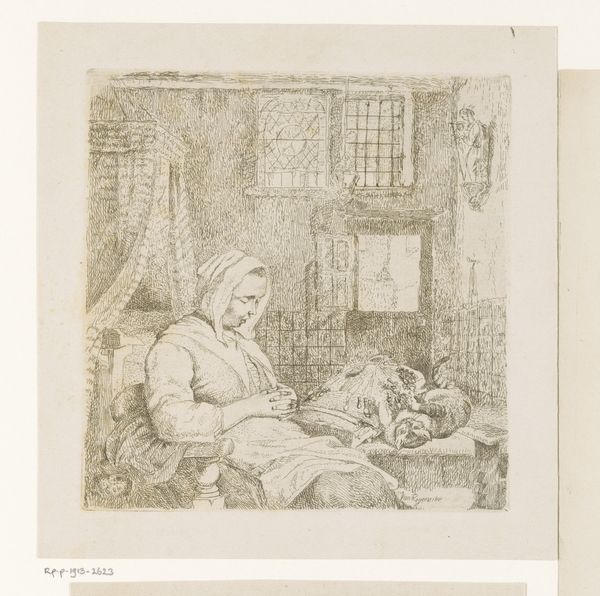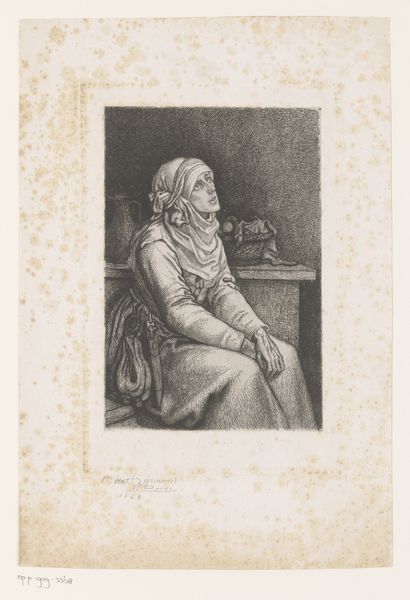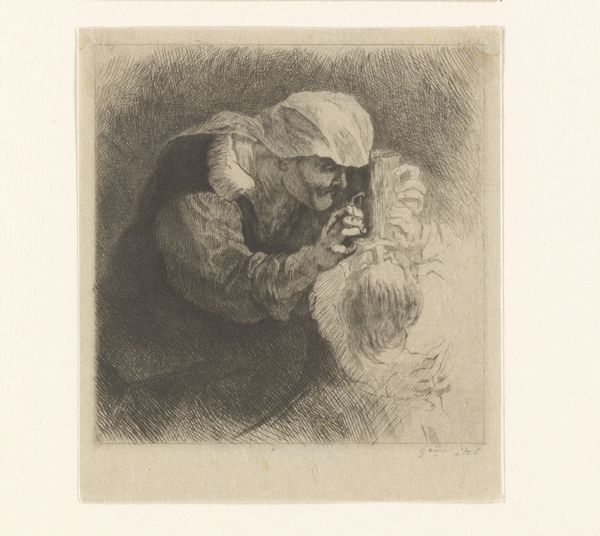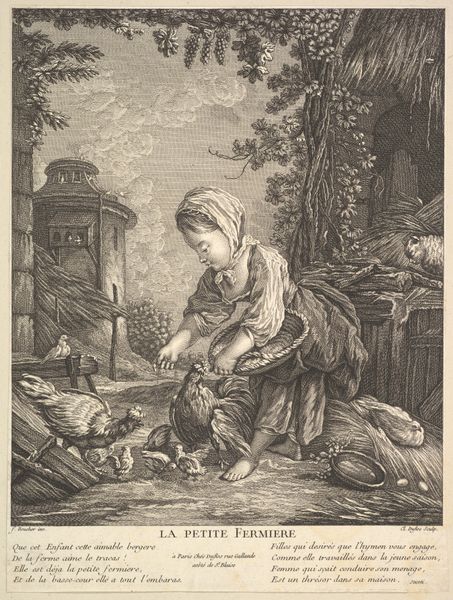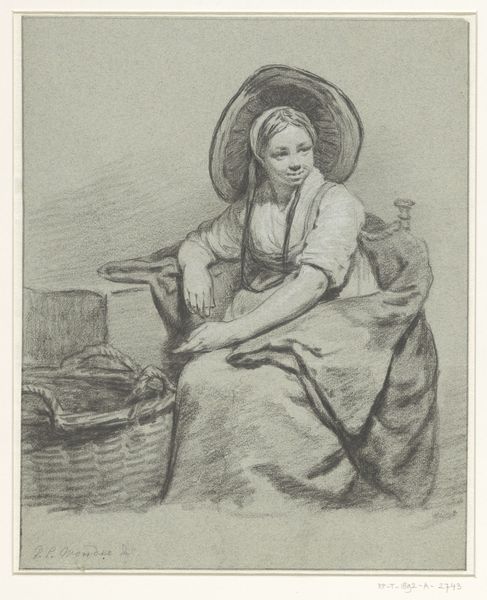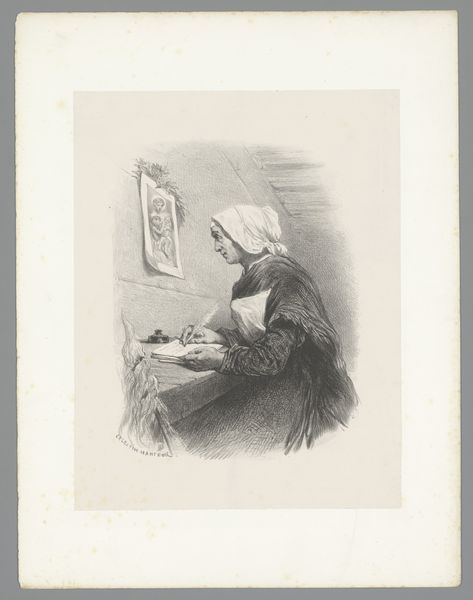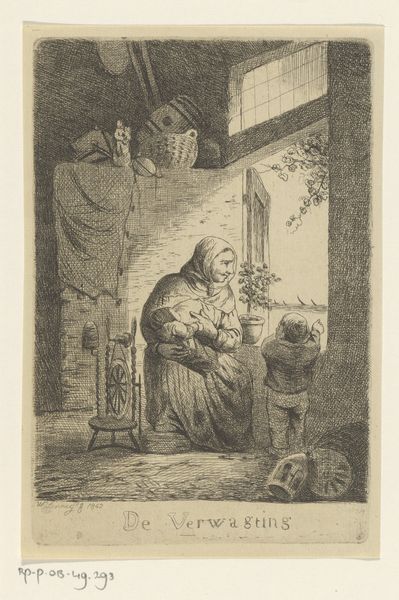
drawing, print, etching, paper
#
portrait
#
drawing
# print
#
etching
#
landscape
#
paper
#
genre-painting
Dimensions: Sheet: 5 11/16 × 4 7/16 in. (14.4 × 11.2 cm) Mount: 16 3/16 in. × 12 7/16 in. (41.1 × 31.6 cm)
Copyright: Public Domain
Curator: Welcome! Let’s pause for a moment to appreciate Jean-François Millet’s etching, “Sewing by Lamplight,” created sometime between 1868 and 1878. It's currently residing here at the Metropolitan Museum of Art. Editor: Oh, there's such a stillness to it. I imagine a cozy, almost melancholy silence pervading the scene. You can almost smell the wax of the candle. Curator: It’s interesting that you mention melancholy. Genre scenes such as these were meant to depict ordinary life, which at the time was frequently sentimentalized or outright fabricated. However, with "Sewing by Lamplight," Millet reveals a cultural interest in the daily existence of French peasants. The iconography of light in the dark, particularly during the Romantic Era, carries profound metaphorical implications, evoking introspection and domestic duty. Editor: Introspection is right. I can relate to the woman hunched over her needlework like that, trying to carve out a small sphere of purpose under the demanding weight of her responsibilities, or maybe her hopes? I see that light, barely holding the dark back, and I just want to let her be. But there’s a mirror behind the candle light that suggests a different story, where light bounces to fill every corner. Curator: Mirrors, indeed! Mirrors signify various aspects. On one hand, they suggest self-reflection or introspection, while on another, vanity. This mirror appears blank and muted to viewers today, however its clarity might have served to show off an element of sophistication from the sitters or the domesticity, since keeping a clear mirror was hard. There's something rather psychological happening here. Editor: Absolutely psychological! You feel drawn into this quiet scene, sharing a tiny space, where stories whisper, not shout. Millet made an intimate work out of humble things. As a reflection of its period, this piece is both timeless and very much of a particular time. What do you think? Curator: It speaks volumes, even in its quietude. It highlights the intimate dance of routine, memory, and symbolism embedded in the act of making. What a profound observation! Editor: Well, yes. Maybe it just proves that even simple domestic life has an entire universe inside, doesn't it?
Comments
No comments
Be the first to comment and join the conversation on the ultimate creative platform.
